Long Tones Trombone Exercise: Essential Long Tone Exercises for Beginners and Intermediates
Original price was: $0.65.$0.00Current price is: $0.00.
Long Tones Trombone Exercises are beginner and intermediate level scores. I provide sheet music and structured practice routines to help trombone players develop breath control, embouchure strength, and consistent tone quality.
Description
Long tones trombone exercises are great for players of all levels (from beginners to pros). These sustained notes help develop breath control, embouchure strength, and a consistent, resonant tone quality. Long tones are the musical equivalent of weight training – they build your core playing muscles!
Why are long tones so crucial? Well, they:
- Improve breath support and control
- Strengthen embouchure muscles
- Develop a centered, focused sound
- Enhance pitch accuracy and intonation
- Increase playing endurance
(Trust me, your band director will thank you for practicing these!)
MusicSheetViewerPlugin 4.1 MusicSheetViewerPlugin 4.1Long Tones Trombone Exercise: Sheet Music Overview
The provided long tone exercises come in two difficulty levels:
- Beginner Long Tones
- Intermediate Long Tones
Let’s take a closer look at each:
**Beginner Long Tones** is in the key of C major, with a tempo marking of 80 BPM (beats per minute). It’s divided into five sections:
- Basic long tones
- B-flat series
- Low B-flat series
- Intervals
- Half-step exercises
The notes are primarily whole notes, allowing for extended, sustained playing.
**Intermediate Long Tones** is a more advanced exercise with:
- Wider range of notes
- More complex rhythms (including eighth notes)
- Slurred passages
- Dynamic changes
Both exercises provide an excellent foundation for developing core trombone skills. (The following video is NOT related to the provided scores)
Long Tones Trombone Exercise: Step-by-Step Breakdown of the Exercise
Let’s focus on the Beginner Long Tones exercise:
- Start with a deep, RELAXED breath.
- Play the first note (F) for four full beats.
- Rest for four beats (indicated by the whole rest).
- Continue this pattern, moving through the notes of the F major scale.
- In the B-flat section, focus on maintaining a consistent tone in the middle register.
- The Low B-flat section challenges you to produce a full sound in the lower register.
- The Intervals section introduces larger leaps between notes.
- Finally, the Half-step section develops your ability to move smoothly between adjacent pitches.
(Remember, slow and steady wins the race here. Don’t rush!)
Long Tones Trombone Exercise: Technical Detail and Musical Analysis
Long tones exercises are deceptively simple but pack a musical punch. Here’s why:
- Breath Control — Sustaining notes for extended periods develops your lung capacity and breath support. This is crucial for playing longer phrases and maintaining a consistent tone.
- Embouchure Strength — Holding notes challenges your facial muscles, building the endurance for extended playing sessions.
- Intonation — Long tones allow you to focus on pitch accuracy. Use a tuner to ensure each note is centered and in tune.
- Tone Quality — By sustaining notes, you can really listen to your sound and make micro-adjustments to achieve your ideal tone.
- Range Development — The exercises gradually expand your range, BOTH high and low.
(Think of long tones as your trombone “yoga” – they stretch and strengthen all the right muscles!)
Long Tones Trombone Exercise: Common Challenges and How to Overcome Them
- Running Out of Air
- Solution — Practice circular breathing or take sneaky “catch breaths” between notes.
- Inconsistent Tone
- Solution — Use a tuner and focus on maintaining a steady airstream.
- Fatigue
- Solution — Build endurance gradually. Start with shorter sessions and increase over time.
- Boredom
- Solution — Use a tuning drone or play along with recordings to make it more engaging.
- Tension in the Embouchure
- Solution — Take frequent breaks and focus on relaxation between notes.
(Remember, even pro players face these challenges. Persistence is key!)
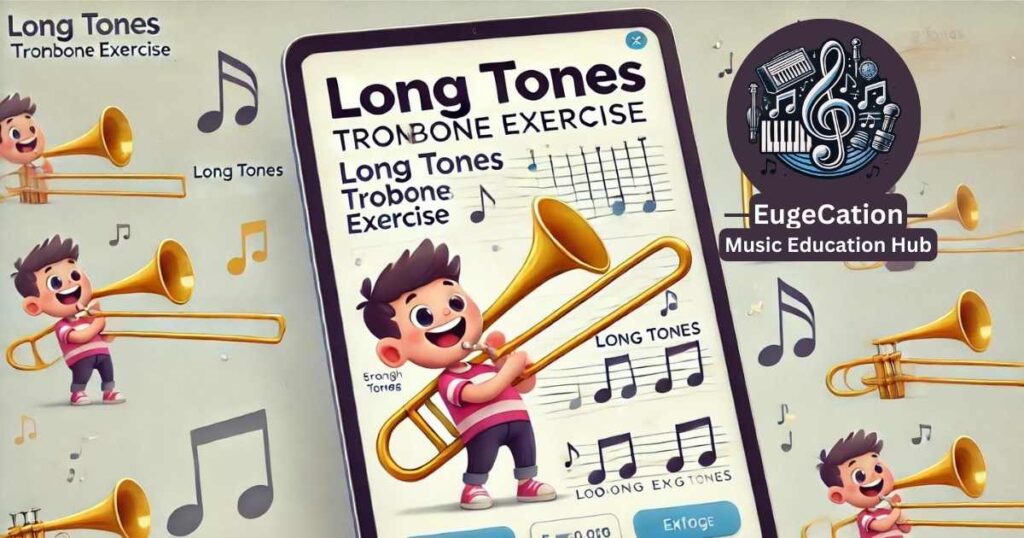
Long Tones Trombone Exercise: Tips for Effective Practice
- Use a metronome to maintain a steady tempo.
- Practice in front of a mirror to monitor your embouchure.
- Record yourself and listen back critically.
- Alternate between loud and soft dynamics to develop control.
- Focus on one aspect (tone, intonation, etc.) per practice session.
- Incorporate long tones into your daily warm-up routine.
- Experiment with different articulations (legato, staccato) on long notes.
(Pro tip: Set a timer for 10 minutes and commit to focused long tone practice DAILY.)
Long Tones Trombone Exercise: How This Exercise Benefits Overall Trombone Playing
Mastering long tones translates directly to improved overall trombone performance:
1. Enhanced Endurance — You’ll be able to play longer phrases without fatigue.
2. Improved Tone Quality — Your sound will become more resonant and focused.
3. Better Intonation — You’ll develop a keener sense of pitch accuracy.
4. Increased Range — Your high and low registers will expand naturally.
5. Greater Expressiveness — Improved breath control allows for more dynamic contrast.
(As one of my students once said, “Long tones are like vegetables – not always fun, but so good for you!”)
Long Tones Trombone Exercise: Related Exercises and Next Steps
To complement your long tone practice, consider these exercises:
- Lip Slurs for trombone — 2-page beginner essential warm-up
- Scale Studies — Learn trombone scales FAST!!
- 12 easy but must tips and techniques for mastering the “Trombone Chromatic Scale“
Prerequisites — Basic knowledge of trombone fingerings and breath support (Read and download my Trombone slide charts in PDF)
Next steps: Once you’ve mastered the beginner long tones, move on to the intermediate exercise for new challenges!
(Remember, consistency is key. A little bit every day beats long, infrequent practice sessions.)
By incorporating long tones into your daily practice routine, you’ll build a solid foundation for all aspects of trombone playing. So grab your horn, take a deep breath, and let those long tones sing!
Additional information
| Instrument | Trombone |
|---|---|
| Level | Beginner, Intermediate |
| Type | Sheet Music |



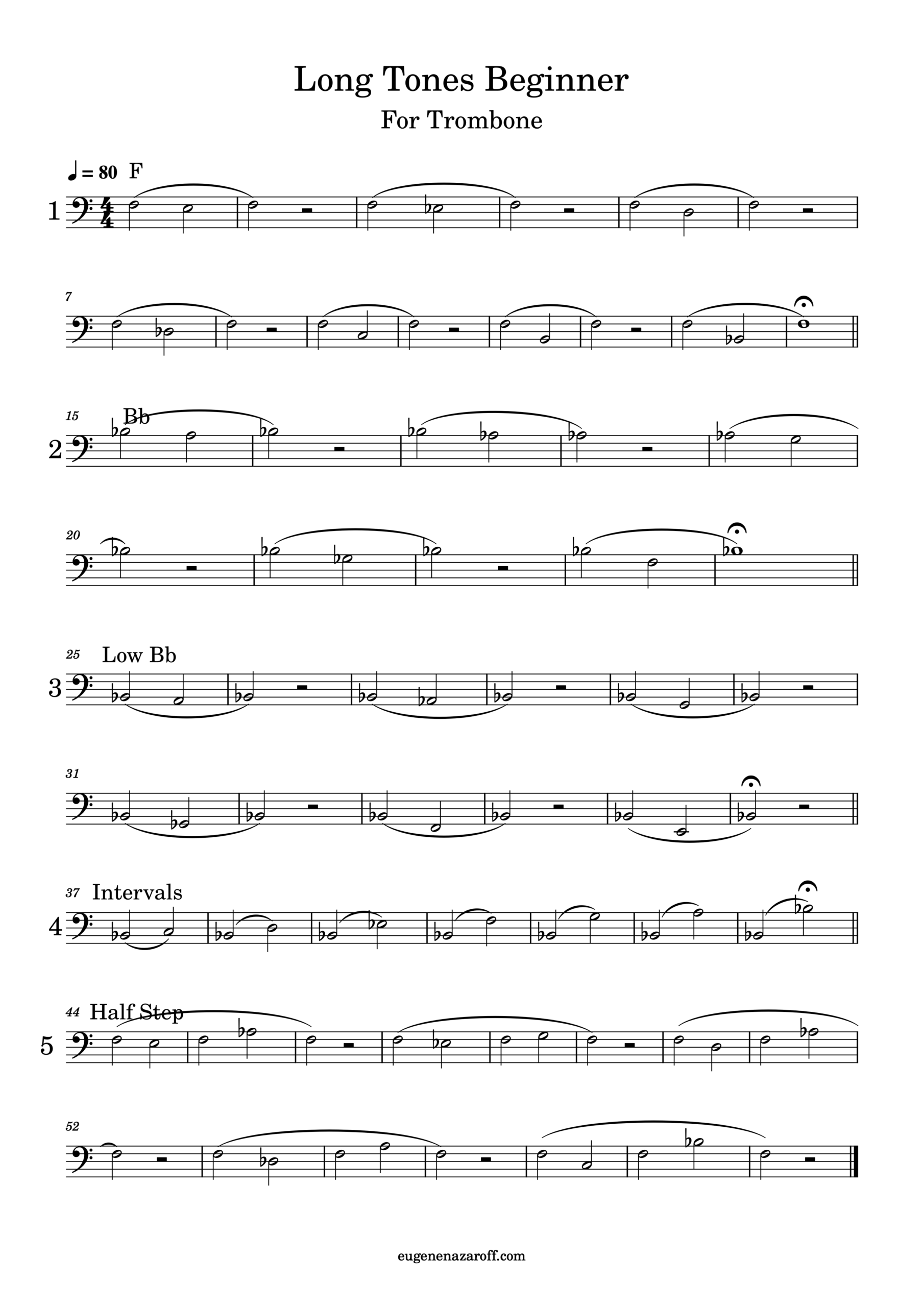
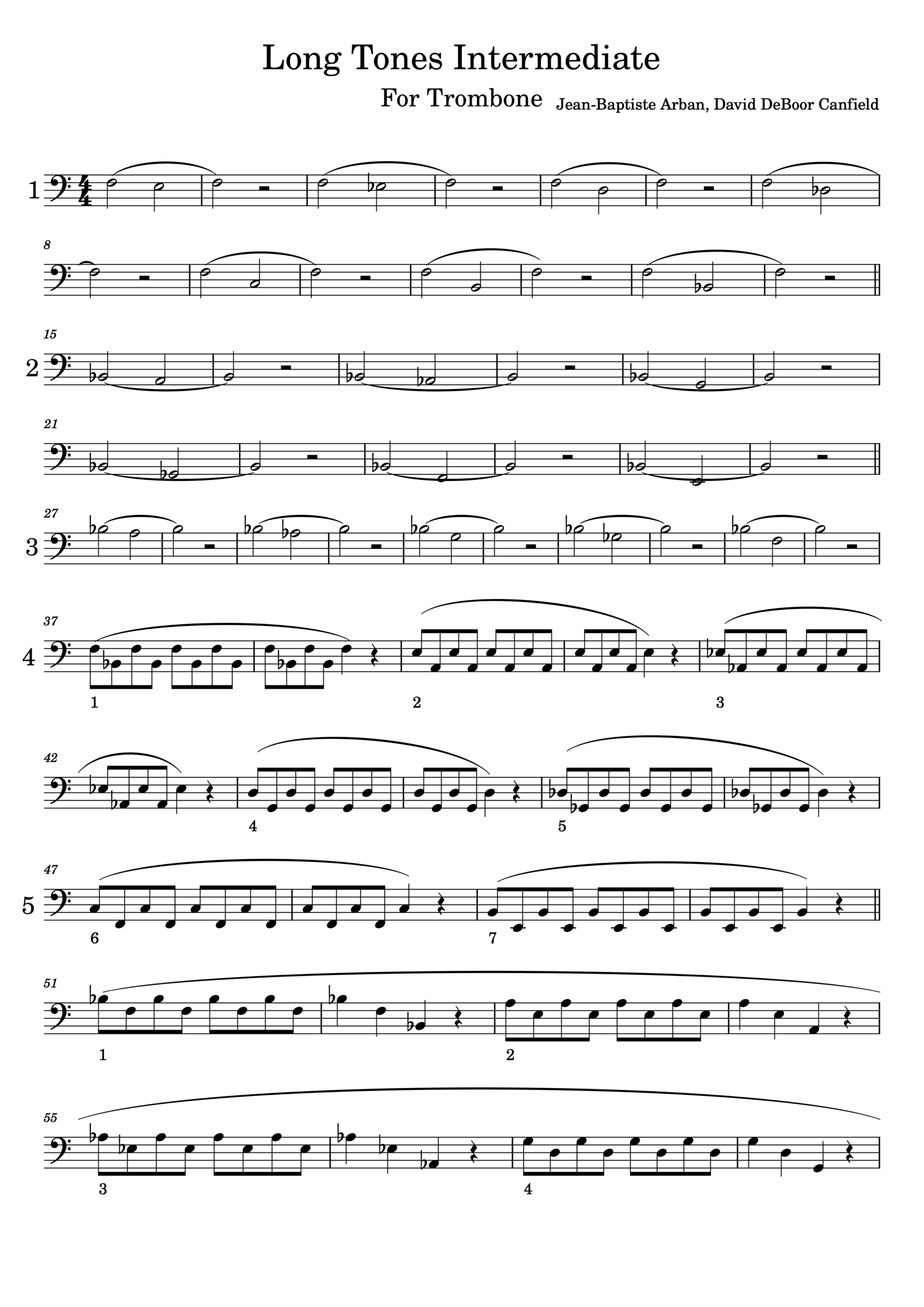
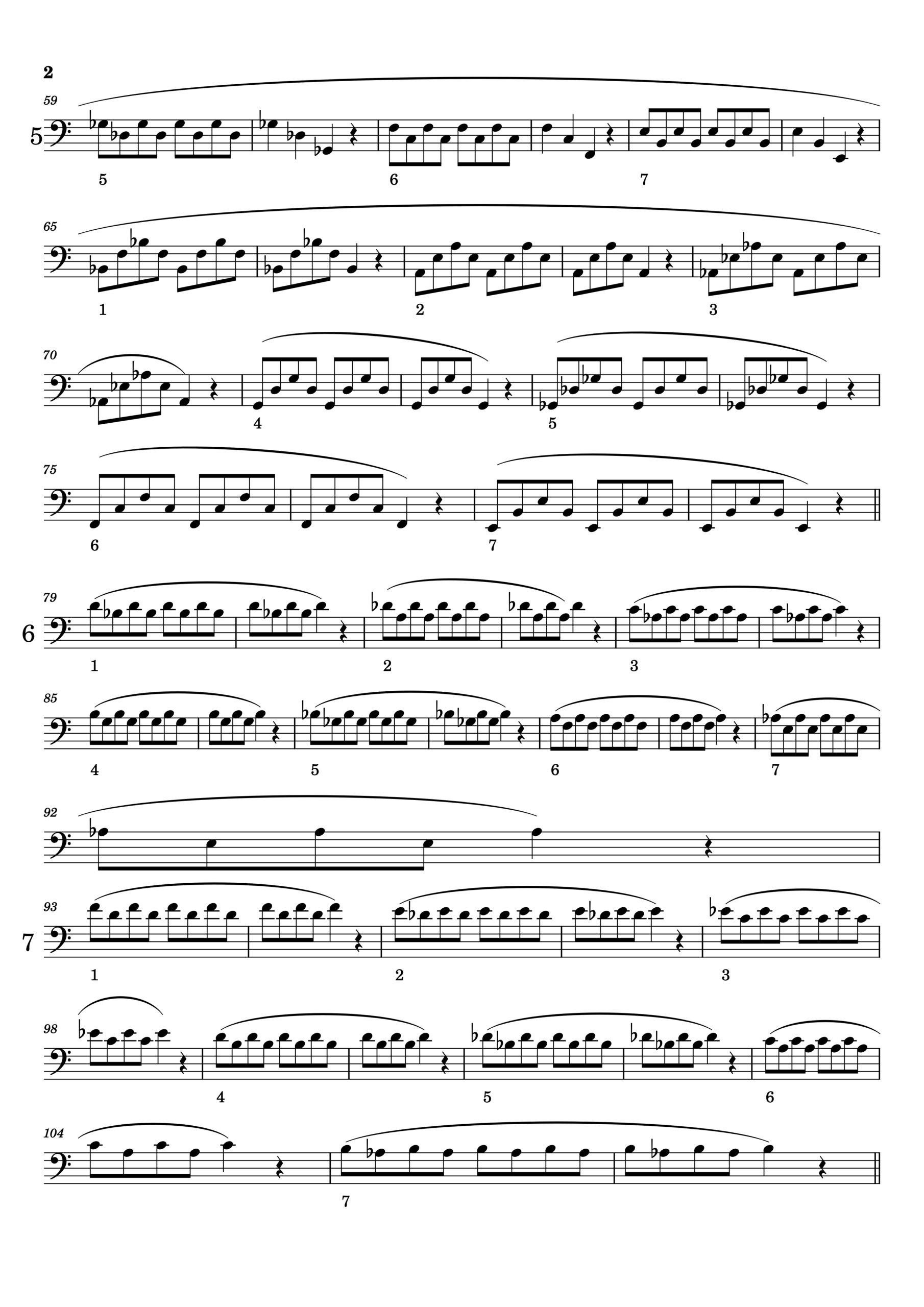
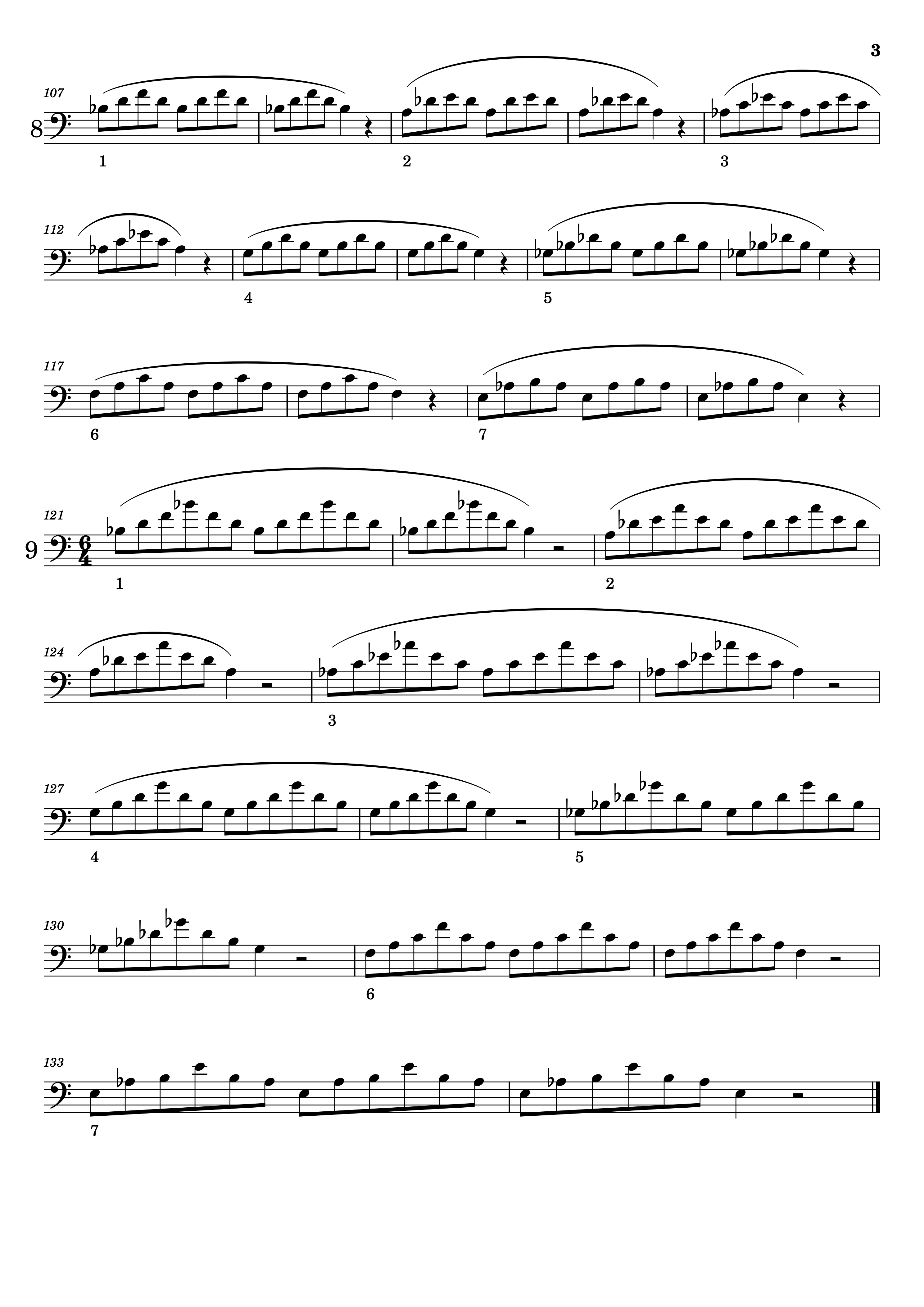




Reviews
There are no reviews yet.